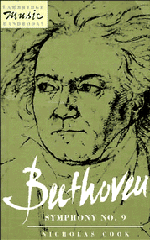3 - Performance and tradition
Published online by Cambridge University Press: 08 January 2010
Summary
The rise of the conductor-interpreter
In 1845, Moscheles addressed a few words to the musicians of the Philharmonic Society orchestra at the start of a rehearsal:
Gentlemen, as we are here assembled together, I should like to compare your performance with the fingers of an admirably trained pianoforte-player's hand. Now, will you allow me to be the hand which sets these fingers in motion, and imparts life to them? May I try to convey to you all the inspirations I feel when I hear the works of the great masters? Thus may we achieve excellence.
In saying this, Moscheles was introducing a new, and distinctively Romantic, concept of the conductor's role; the conductor plays the orchestra as a virtuoso plays the piano, acting as an intermediary between composer and listener. Years later, Bruno Walter expressed the same idea in more overtly Romantic terms when he wrote that ‘only he who understands that, under Wagner's baton, the Ninth sounded entirely in the spirit of Beethoven and that yet Wagner's own personality fully lived in it … comprehends the essence of musical interpretation.’
And it is through Richard Wagner's eyes, and through his involvement with the Ninth Symphony, that we can best chart the rise of the conductor-interpreter.
Wagner the conductor
In the late 1820s, when he was in his teens, Wagner heard several performances of the Ninth Symphony at the Leipzig Gewandhaus. This was some years before Mendelssohn took over the orchestra; they played the first three movements under their leader, Heinrich Matthäi, with the conductor Christian Pohlenz taking up the baton for the finale.
- Type
- Chapter
- Information
- BeethovenSymphony No. 9, pp. 48 - 64Publisher: Cambridge University PressPrint publication year: 1993



